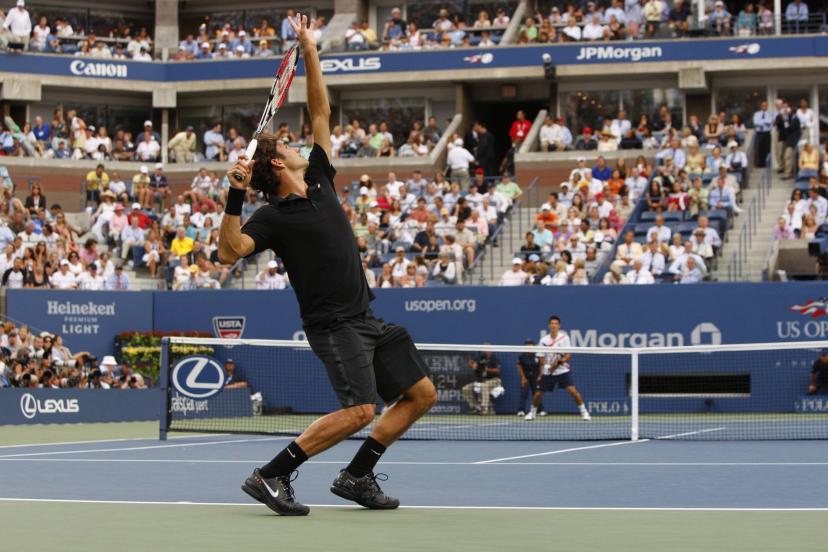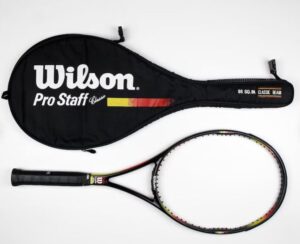Introduction to Iconic Tennis Outfits
The world of tennis has not only been a playground for some of the finest athletes but also a runway for fashion statements. From Lacoste’s crocodile-emblazoned polos in the 1920s to Serena Williams’ audacious catsuit, tennis outfits have always stirred conversations, sometimes even controversies. In this article, we’ll delve into the most iconic men’s and women’s tennis outfits of all time, unpacking the stories and symbolism behind them.
Tennis outfits have played a crucial part in the sport’s history, shaping its culture and image. They’ve represented the changing times, societal norms, and personal expressions of the players. But more importantly, they’ve proven that fashion and functionality can coexist, giving birth to a unique style known as “sport chic”.
So, buckle up as we take a nostalgic journey through the fashion archives of tennis, celebrating its elegance, audacity, and everything in between.
The Evolution of Fashion in Tennis
The evolution of tennis fashion is a fascinating tale of societal shifts, rebellious spirits, and commercial interests. In the early days, players dressed in long-sleeved shirts, trousers, and long dresses – attire that was more befitting for a garden party than an intense sports match. But as the sport started to gain popularity, the outfits began to evolve, balancing functionality with style.
The 20th century brought significant changes. The French tennis legend Rene Lacoste, known as the ‘Crocodile’, was the first to introduce the polo shirt – a lightweight, short-sleeved top made of breathable fabric. This was a revolutionary moment which marked the advent of sportswear as we know it today.
As the decades rolled on, the tennis court became a stage for bold fashion experiments. From the colourful designs of the 70s and 80s to the sleek, modern styles of today, tennis outfits have always kept pace with the zeitgeist, reflecting the fashion trends of their time.
The Most Iconic Men’s Tennis Outfits of All Time

When it comes to iconic men’s tennis outfits, the list is long and distinguished. The first that comes to mind is Bjorn Borg with his Fila striped headband and short shorts, a look that was as much a part of his persona as his powerful two-handed backhand. Then there’s Andre Agassi, who ditched the traditional white attire for neon colours and denim shorts, challenging the norms and setting a new trend.
However, the crown for the most iconic men’s tennis outfit of all time arguably goes to Roger Federer. Whether it’s his classic Wimbledon attire or his Darth Federer look, he has consistently set the bar high in terms of style and elegance. The ‘Darth Federer’ look, in particular, was a departure from his usual clean-cut image. The all-black ensemble, complete with a bandana, was a bold and daring choice, making him look like a stylish tennis ninja.
John McEnroe, too, cannot be left out of this conversation. His rebellious spirit was reflected in his choice of attire. His famous sleeveless shirt and headband reflected his ‘rockstar’ persona, making him one of the most recognizable figures in tennis.
The Most Iconic Women’s Tennis Outfits of All Time
If men’s tennis outfits have set trends, the women’s outfits have shattered stereotypes. From Suzanne Lenglen’s flapper dress in the 1920s to Serena Williams’ Nike-designed catsuit, women’s tennis outfits have pushed boundaries and challenged conventions.
Undoubtedly, one of the most iconic women’s tennis outfits of all time is the white one-piece worn by Anne White at Wimbledon in 1985. The outfit caused quite a stir, leading to a change in the tournament’s dress code rules.
Serena Williams, a fashion icon in her own right, has also made waves with her outfits. Whether it’s her denim skirt or her famous catsuit, she has used fashion as a tool to express herself and make a statement. Her outfits have not only been trendsetting but also symbolic, representing her strength, resilience, and defiance.
Roger Federer: From Classic to Darth Federer
Roger Federer‘s fashion journey is a testament to his evolving persona. From the crisp white outfits that reflected his classic, elegant playing style to the all-black ‘Darth Federer’ look that showcased his audacious side, his outfits have always been a reflection of his character.
The ‘Darth Federer’ look, in particular, was a watershed moment. It was a departure from the traditional white, a bold statement that challenged conventions. It gave Federer a mysterious, intimidating aura, perfectly complementing his aggressive playing style.
However, Federer’s fashion evolution was not just about making a statement. It was also about comfort and functionality. His outfits, designed by Nike, were made with high-performance fabrics that allowed him to move freely and stay cool. This blend of style, comfort, and performance is what makes Federer’s outfits iconic.
Serena Williams: Breaking Boundaries with Every Outfit
Serena Williams is not just a champion on the tennis court but also in the world of fashion. From her daring denim skirt to her empowering catsuit, her outfits have been bold, audacious, and boundary-breaking.
Her denim skirt, worn at the 2004 US Open, was a playful nod to the streetwear trend, blending the casual with the sporty. However, it was her catsuit that truly broke new ground. Worn at the 2018 French Open, the catsuit was a powerful symbol of defiance, representing her return to the sport after a life-threatening pregnancy.
But Serena’s outfits are not just about making a statement. They’re also about functionality. The catsuit, for example, was designed to prevent blood clots, a condition she suffered from during her pregnancy. This blend of style and practicality is what sets Serena’s outfits apart.
The Controversy of Serena Williams’ Denim Skirt and Catsuit
Despite their iconic status, Serena’s denim skirt and catsuit have not been without controversy. The denim skirt, in particular, stirred a debate about the appropriateness of casual wear on the tennis court. Meanwhile, her catsuit sparked an even bigger controversy, leading to a change in the French Open’s dress code rules.
This controversy, however, did not deter Serena. Instead, she used it as an opportunity to stand up for herself and challenge the status quo. She defended her choice of outfits, saying they were a reflection of her personality and a statement of empowerment.
These controversies, in many ways, have only added to the iconic status of Serena’s outfits. They’ve shown that fashion can be a powerful tool for expression and defiance, giving a voice to those who dare to be different.
Venus Williams, Anne White, and the Impact of Their Outfits
Serena is not the only Williams sister to have made a mark in the world of tennis fashion. Venus Williams, too, has had her share of iconic outfits. Her revealing outfits, adorned with sequins and lace, have often caught the eye, pushing the boundaries of what’s acceptable on the tennis court.
But perhaps the most controversial women’s tennis outfit of all time was the white one-piece worn by Anne White at Wimbledon in 1985. The outfit, which covered her from neck to toe, was deemed inappropriate by the tournament officials, leading to a change in the dress code rules.
These outfits, although controversial, have had a profound impact. They’ve challenged the norms, sparked conversations, and paved the way for more freedom and creativity in tennis fashion.
Andre Agassi, Bjorn Borg, and Rafael Nadal: Redefining Men’s Tennis Outfits
Andre Agassi, Bjorn Borg, and Rafael Nadal have each, in their own way, redefined men’s tennis outfits. Agassi, with his neon colours and denim shorts, brought a touch of rock and roll to the tennis court. Borg, with his headband and short shorts, became a style icon of the 70s. And Nadal, with his sleeveless shirts and capris, brought a fresh, modern look to the sport.
These outfits were not just about style. They were about self-expression. They gave these players a unique identity, setting them apart from their peers. They showed that tennis outfits could be more than just functional – they could be a reflection of one’s personality and ethos.
Outfits That Made Headlines: From McEnroe’s Sleeveless to Nadal’s Capris
Over the years, several tennis outfits have made headlines, either for their audacity, their controversy, or their novelty. McEnroe’s sleeveless shirt, for instance, was a bold statement of rebellion, reflecting his fiery personality. Nadal’s capris, on the other hand, were a departure from the traditional shorts, adding a touch of elegance to the sport.
These outfits, although they may have raised some eyebrows, have left a lasting legacy. They’ve shown that tennis fashion can be daring, innovative, and even controversial. They’ve added a touch of glamour to the sport, making it more appealing and relatable to the audience.
Influence of Brands: The Role of Lacoste and Other Brands in Tennis Fashion
Brands have played a crucial role in shaping tennis fashion. From Lacoste’s pioneering polo shirts to Nike’s innovative designs, they’ve been at the forefront of the evolution of tennis outfits.
Lacoste, in particular, has left a significant imprint. Founded by the French tennis legend Rene Lacoste, the brand was the first to introduce the polo shirt – a game-changer in sportswear. Its iconic crocodile logo has since become synonymous with tennis fashion.
Nike, too, has made a significant contribution. Its collaborations with players like Federer and Serena Williams have produced some of the most iconic tennis outfits of all time. Its innovative designs and high-performance fabrics have set the standard for tennis wear, blending style with functionality.
The Impact of Tennis Outfits: More Than Just Fashion
Tennis outfits are more than just fashion statements. They’re a reflection of the times, the culture, and the personalities of the players. They’ve been a platform for self-expression, a tool for rebellion, and a symbol of empowerment.
The impact of tennis outfits extends beyond the court. They’ve influenced mainstream fashion, giving rise to the ‘sport chic’ trend. They’ve shaped the image of the sport, making it more stylish, modern, and relatable.
But perhaps the biggest impact of tennis outfits has been on the players themselves. They’ve given them a unique identity, a sense of confidence, and a connection with their fans. They’ve become a part of their persona, adding to their aura and mystique.
Matching Tennis Outfits: A Fun Trend in Doubles
In the world of doubles, matching tennis outfits have become a fun trend. From the Bryan brothers’ identical outfits to the Williams sisters’ coordinated looks, matching outfits have added a touch of camaraderie and fun to the sport.
This trend, although it may seem superficial, has a deeper significance. It symbolizes unity and teamwork – two essential ingredients for success in doubles. It gives the players a sense of belonging, strengthening their bond on and off the court.
The US Open: A Runway for Tennis Fashion
The US Open has always been a runway for tennis fashion. With its relaxed dress code and vibrant atmosphere, it’s the perfect stage for players to showcase their style.
From Serena’s denim skirt to Agassi’s neon colours, the US Open has seen some of the most iconic and controversial tennis outfits of all time. It’s a platform where fashion meets sport, where style is as much a part of the game as the skill.
Conclusion: The Future of Tennis Outfits
As we look to the future, one thing is certain – tennis outfits will continue to evolve, reflecting the changing times and tastes. They’ll continue to push boundaries, challenge norms, and make statements. But more importantly, they’ll continue to be more than just fashion. They’ll be a reflection of the players’ personalities, a part of their identity, and a symbol of their spirit.
So, as we celebrate the most iconic men’s and women’s tennis outfits of all time, let’s also look forward to what’s to come. Because in the world of tennis, fashion is not just about looking good – it’s about feeling good, playing good, and being good.


